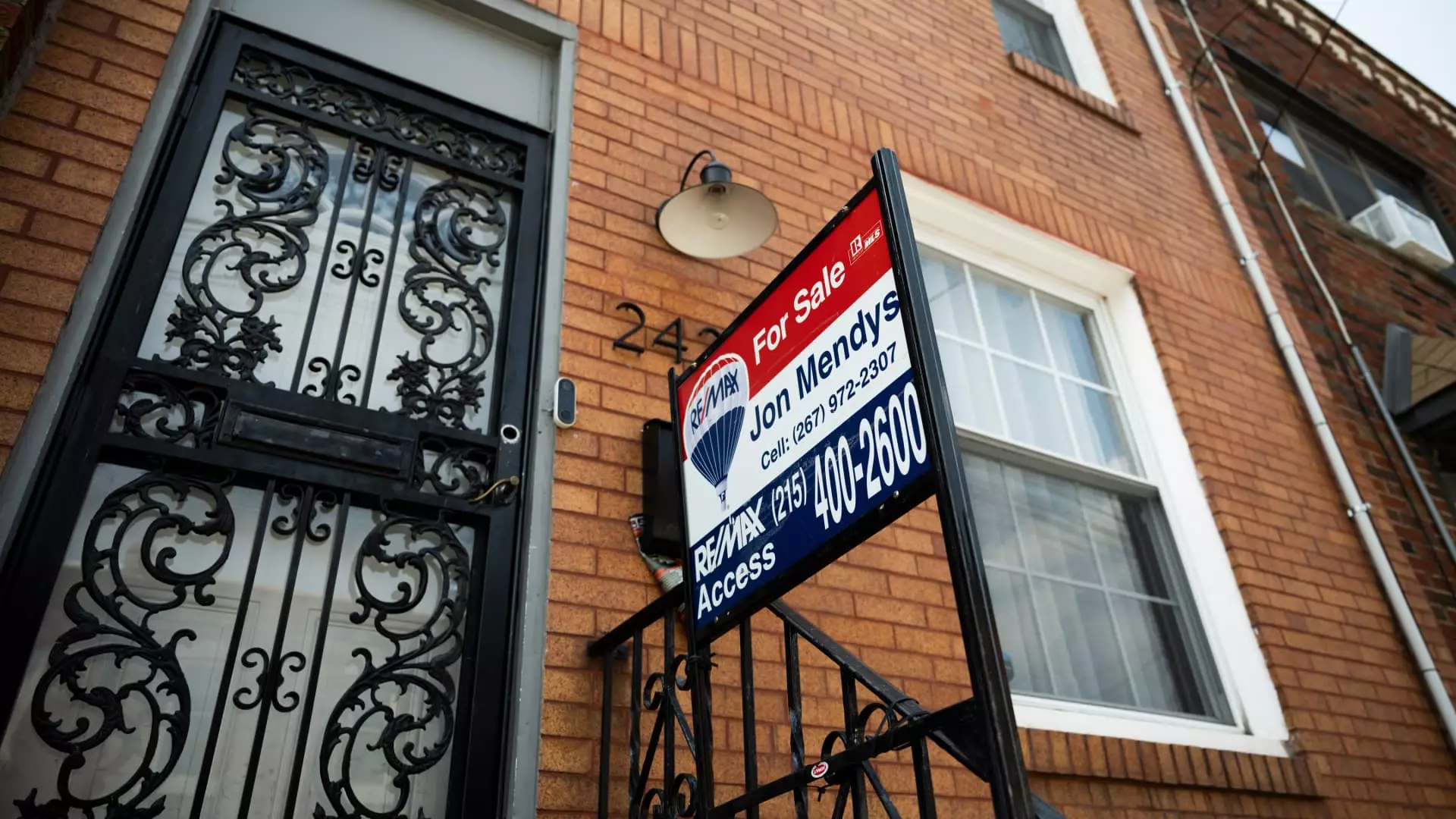The U.S. housing market is currently experiencing a pronounced downturn, marked by persistent challenges stemming from high mortgage rates, inflated property values, and a limited inventory of available homes. As potential homeowners navigate this landscape, the implications for buyers and sellers are significant, unfolding a narrative filled with financial hurdles and shifting dynamics.
Recent data from the National Association of Realtors (NAR) underscores a troubling picture: home sales of pre-owned properties fell by 4.9% in January compared to December, settling at an annualized rate of 4.08 million units. This decline is steeper than analysts anticipated, reflecting a downturn in a market that is already grappling with historically low sales figures. Despite a fleeting indication of recovery from a year-over-year perspective—with sales actually rising by 2% when compared to January 2024—these statistics still signal a market functioning at approximately 15-year lows.
It’s essential to note that these sales figures primarily represent contracts signed in the previous months when mortgage rates had temporarily dipped from above 7% into the more manageable 6% range. However, the persistence of high mortgage rates is dampening buyer enthusiasm, reinforcing the sentiment that affordability remains a troubling barrier for many consumers considering homeownership.
Lawrence Yun, chief economist for NAR, highlights this pressing challenge, stating, “Mortgage rates have refused to budge for several months despite multiple rounds of short-term interest rate cuts by the Federal Reserve.” The stagnation of mortgage rates amid otherwise favorable economic conditions raises critical questions about the housing market’s future as high prices compound affordability issues.
With only 1.18 million homes available at the end of January, a modest 3.5% increase from December, the overall inventory remains critically low. It represents merely a 3.5-month supply based on prevailing sales rates, falling far short of the six-month benchmark that demarcates a balanced market. As buyers continue to confront limited options, home prices remain under upward pressure. The median price of sold homes in January reached $396,900—marking a 4.8% increase from the previous year and establishing a record high for January sales.
A closer examination reveals a significant disparity within the market itself: higher-priced homes are witnessing growth, while entry-level homes languish. For instance, properties priced between $100,000 and $250,000 saw a 1.2% drop in sales year-over-year. Conversely, luxury homes exceeding $1 million surged nearly 27% in sales. This bifurcated market tells a story of economic stratification wherein only the most financially secure buyers are able to traverse the current landscape while first-time buyers continue to struggle.
While all-cash transactions constitute a substantial 29% of sales—the highest proportion observed in historical records—this figure has eased slightly from 32% the previous year. First-time homebuyers, who typically represent around 40% of the market, are now trapped at a 28% share, illustrating a disturbing trend where aspiring homeowners find it increasingly difficult to penetrate the market.
Despite a slight uptick in inventory, Yun emphasizes that a dual reduction in mortgage rates and accessible stock of homes is necessary for catalyzing movement in the market. “More housing supply allows strongly qualified buyers to enter the market,” he notes, highlighting the critical nexus between inventory and affordability. Yet, with buyer traffic waning, real estate professionals are left grappling with the reality of increasing signs without the corresponding foot traffic.
As this landscape unfolds, it becomes clear that the U.S. housing market is at a critical crossroads. The combination of high prices, stubbornly elevated mortgage rates, and insufficient inventory presents considerable challenges for all parties involved and may pave the way for a protracted period of adjustment as both sellers and buyers recalibrate their expectations in an increasingly complicated market. Whether the coming months will reveal a path toward stabilization or further decline remains uncertain, but the stakes are undeniably high.

